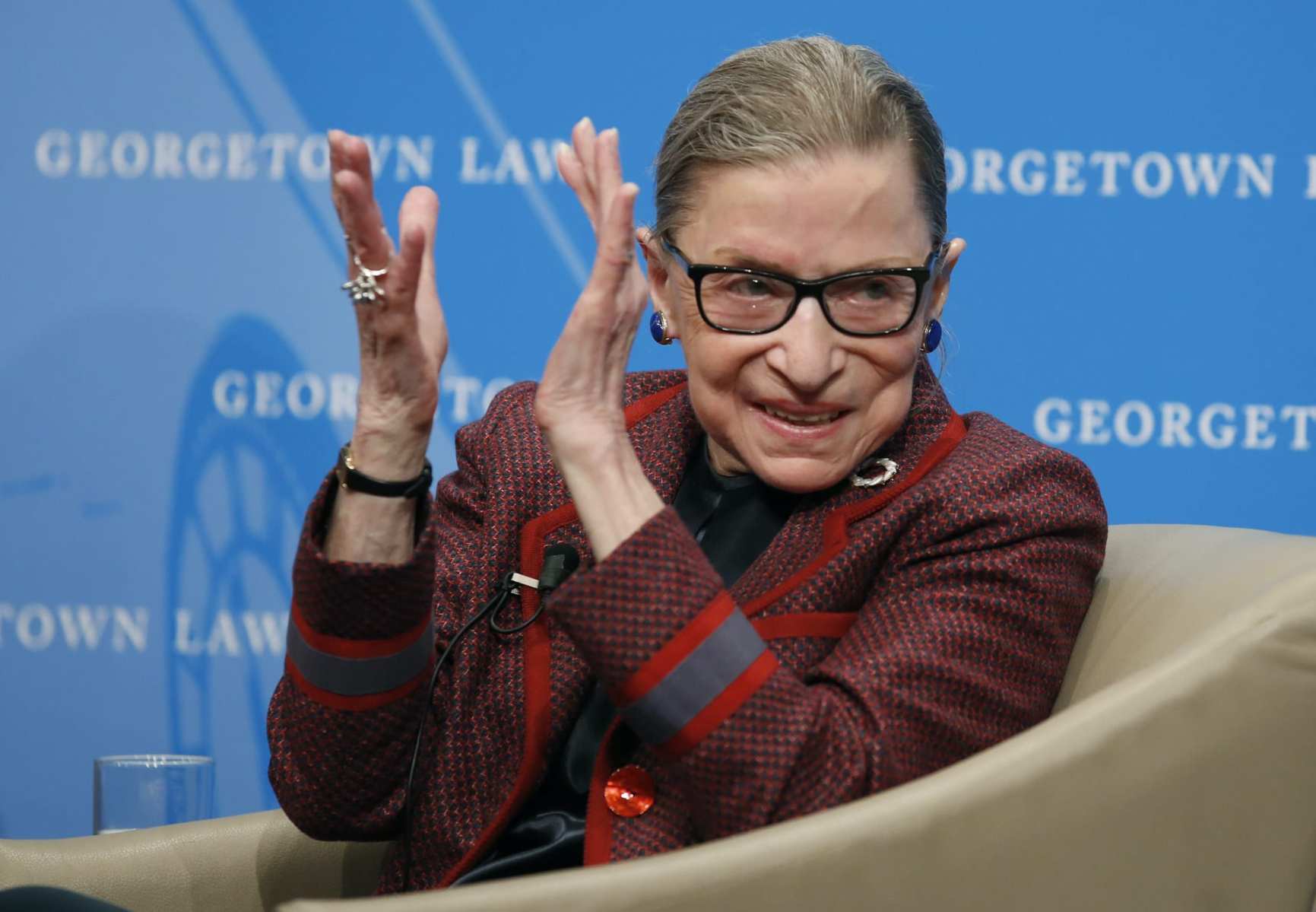Justice Ruth Bader Ginsburg, the second woman to serve on the Supreme Court, died on Friday from complications of metastatic cancer of the pancreas. She was at her home in Washington, D.C., surrounded by her family, according to the court.
“Our nation has lost a justice of historic stature,” Chief Justice John Roberts said in a statement. “We at the Supreme Court have lost a cherished colleague. Today we mourn but with confidence that future generations will remember Ruth Bader Ginsburg as we knew her, a tireless and resolute champion of justice.”
Ginsburg was the most senior liberal justice on the nine-member court and a feminist icon. Her court collar has been made into buttons. Her face is emblazoned on baby onesies. Her fans call her “the Notorious RBG.”
“People ask me sometimes, when — when do you think it will be enough?” Ginsburg told PBS in a 2015 interview. “When will there be enough women on the court? And my answer is when there are nine.”
Colleagues and admirers highlighted the impact that Ginsburg’s commitment to gender equity had on the court.
“There’s no way to overstate the role that Ruth Ginsburg played on the court, as an unabashed believer in women’s equality and rights and, for many years, as the only woman,” said Cecile Richards, co-founder of Supermajority and the former president of Planned Parenthood. “She understood exactly what it meant to have no representation and the political consequences. Until President Obama added two women to the court, her impact was so oversized.”
Richards recalled the first time she saw Ginsburg on the bench in 2007, when the court heard oral arguments in the Partial Birth Abortion Ban Act of 2003.
“I remember sitting in the courtroom and this frail, 90-plus pound woman was literally carrying an entire gender on her back, is what it felt like,” Richards said. “She was extraordinary. Her legacy is enormous.”
Ginsburg’s death, just 46 days before the general election, raises the stakes in both the presidential race and more than a dozen competitive U.S. Senate races throughout the country.
Despite battling repeated bouts of cancer, Ginsburg had said she would not retire from her lifetime appointment to the court, a move meant to deny Republican President Donald Trump the opportunity to fill another court vacancy.
“She, as much as any justice ever has, understood the very dangerous political moment we are in,” Richards said. “She held on as long as she could because she knew the potential impact for women’s rights, for LGBTQ rights, for voting rights, for social justice.”
Republican Senate Majority Leader Mitch McConnell said on Friday that Trump’s replacement nominee would receive a vote on the Senate floor.
McConnell’s statement appeared to backtrack on moves he made after the 2016 death of Justice Antonin Scalia, a conservative icon. Scalia died 269 days before that year’s presidential election. Then, McConnell blocked the chamber from voting on President Barack Obama’s pick, appeals court judge Merrick Garland.
At the time, McConnell said that there was precedent that Supreme Court vacancies should not be filled in the run up to an election, which he attributed to Joe Biden, who chaired the Senate Judiciary Committee in the 1990s during the presidency of George H.W. Bush. Biden floated the idea in 1992, but it was never tested because no subsequent court vacancy occurred during Bush’s presidency.
McConnell said in a statement that the vacancies are not analogous because Ginsburg’s death occurred when both the White House and Senate are under Republican control.
A potential vacancy on the Supreme Court has already become an issue in the 2020 election. Trump released his latest list of potential nominees last week, and Democrats increasingly focused on the impact the presidential and Senate elections may have on the court’s ideological balance.
The political implications of Ginsburg’s passing now leave little room to mark her legacy or mourn her passing. It was a reaction the justice seemed to have anticipated, reportedly dictating to her granddaughter, Clara Spera, in a statement days before her death: “My most fervent wish is that I will not be replaced until a new president is installed,” NPR reported.
Since 1975, the shortest number of days that have elapsed between the nomination of a justice and their confirmation vote is 19, for Justice John Paul Stevens. Stevens retired in 2010. The average number of days between nomination and confirmation vote is 69.6, or about 2.3 months, according to the nonpartisan Congressional Research Service.
Ginsburg was born in Brooklyn, New York, on March 15, 1933. She graduated from Cornell University, Harvard Law School and Columbia Law School. She married Martin Ginsburg in 1954. They have a daughter, Jane, and a son, James.
“Justice Ginsburg paved the way for so many women, including me. There will never be another like her. Thank you RBG,” former Secretary of State and 2016 Democratic presidential nominee Hillary Clinton wrote on Twitter.





